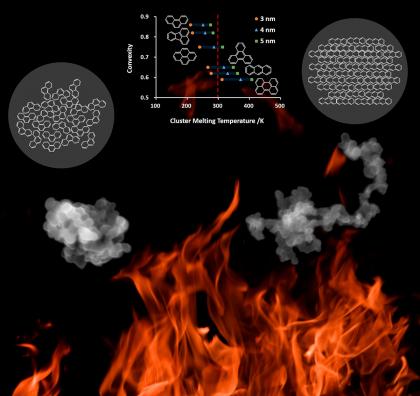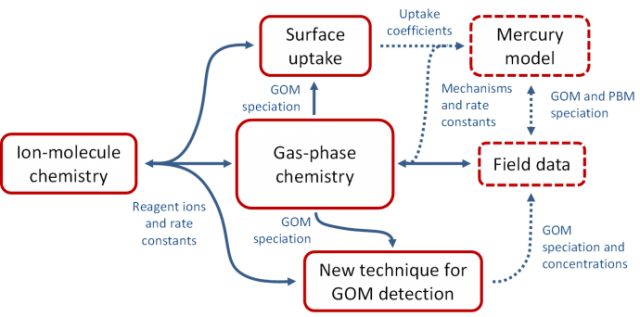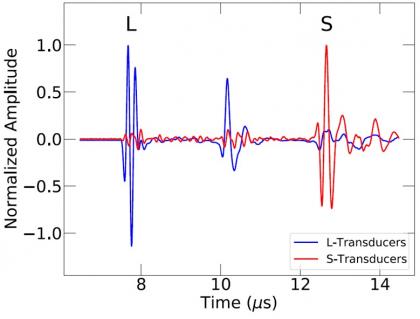
Research Projects
The two ongoing research projects in our lab focus on atmospheric aerosols and atmospheric mercury.
Transformations and Impacts of Atmospheric Aerosols
Atmospheric aerosols originate from two major sources: direct particle emissions and gas-to-particle conversion of chemicals produced from atmospheric gas-phase oxidation. Increased aerosol loading of the atmosphere has negative impacts on air quality and human health and contributes to local and global climate change. Presently, the chemical and physical mechanisms responsible for the transformation of aerosol particles are not well understood. Impacts of aerosols on the environment and human health are poorly quantified, as well.
Our research aims to understand the chemical and physical mechanisms responsible for the transformation of atmospheric aerosols as well as associated impacts of aerosols on climate and human health. Major focus areas:
- Morphology and optical properties of soot nanoparticle agglomerates produced from combustion
- Experimental studies of gas-surface interactions involving organic and combustion soot aerosols
- Development of hyphenated mass spectrometry instrumentation for chemical analysis of aerosol nanoparticles and their gas-phase precursors
- Field measurements of atmospheric aerosols

Chemistry of Atmospheric Mercury
Mercury is a persistent, bioaccumulative pollutant. A large fraction of atmospheric mercury is emitted in elemental form (Hg0) by coal-fired power plants. Oxidation of Hg0 followed by atmospheric deposition is the primary cause of mercury contamination of the aquatic environment. Current knowledge of the chemical processes that convert atmospheric mercury from elemental to oxidized state is highly uncertain. Furthermore, molecular identities of oxidized mercury species are largely unknown.
The goal of this project is to understand the chemical speciation of the atmospheric oxidized mercury and elucidate the role of gas-phase and surface reactions in the formation of gaseous oxidized mercury (GOM) and particle bound mercury (PBM). Major focus areas:
- Experimental studies of gas-phase mercury oxidation intermediates and uptake of oxidized mercury species on surfaces
- Research into ion-molecule chemistry of oxidized mercury species for developing direct detection of oxidized mercury in the atmosphere by chemical ionization mass spectrometry
- Field measurements of atmospheric oxidized mercury

This project will help to resolve an ongoing debate about the relative importance of different mercury transformation pathways in the atmosphere. An updated mercury chemical mechanisms in mercury transport and deposition models will help to understand better mercury methylation and bioaccumulation.

Nanopore-confined liquids probed by ultrasonic experiments
This project explores the effects of confinement on compressibility of fluids by means of adsorption-ultrasonic experiments. When fluids are confined in nanopores, many of their physico-chemical properties (e.g. density, freezing point, diffusivity) change as compared to bulk. Some experimental studies suggested that compressibility of confined fluids might also deviate from that in bulk. A series of recent molecular simulation studies, including the work by Gennady Gor, confirmed these observations for nitrogen and argon, and predicted that the departure of compressibility progressively increases with the decrease of the pore size. This let us hypothesize that confinement will change the elastic properties of all fluids when the pore size is comparable to the molecular size, and the extent of this change is determined by the pore size and strength of the solid-fluid interactions. Here we are testing this hypothesis experimentally, as well as explore the effects of other parameters, such as the properties of pore surface, molecular shapes, etc. We also investigate whether confinement can lead to appearance of the shear modulus absent in bulk fluids. We expect that the results of these experiments will complement the current and future molecular simulation studies by Gennady Gor’s group.
